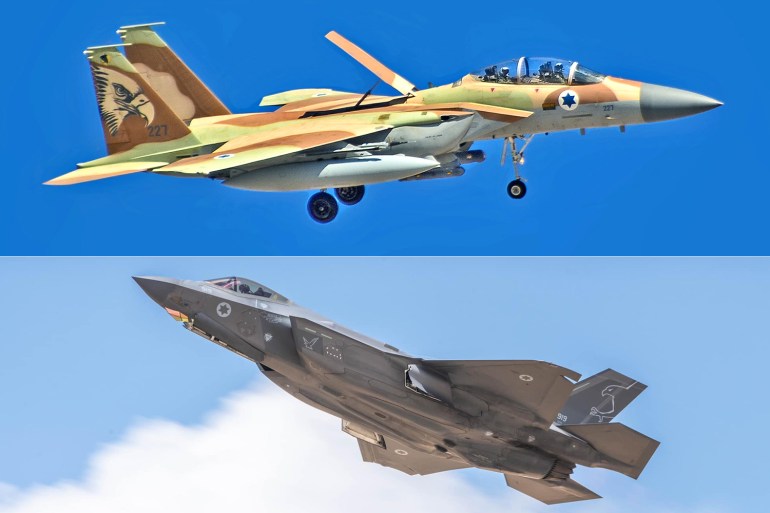On Friday morning, Iranian air defense forces shot down three drones over the central province of Isfahan.
Iran has not yet released its investigation into the incident, but the United States announced earlier that Israel had launched the attack. Despite speculation that Israel was behind it, it has not commented.
But observers expect an Israeli attack on Iran to be the next in a series of escalations that began with the April 1 attack on the Iranian mission in Damascus, which Iran blamed on Israel.
Second, Iran launched 331 drones and missiles at Israel on Saturday night in a carefully planned attack, raising hopes for an Israeli response.
But if Israel were to attack Iran, how would it respond?
Israel has been planning attacks on sensitive Iranian sites for decades, but as part of encrypted diplomatic and military dialogue between Iran and Israel, this response will have to be limited.
Israel needs to achieve high-value goals, but not goals high enough to justify further Iranian military response and escalate into a full-scale conflict.
So what is Israel's choice?
airstrike
The two countries are more than 900 kilometers (560 miles) apart at their closest points, and most of Iran's military bases and nuclear facilities are more than 2,000 kilometers (1,243 miles) from Israel.
The F-15i Ram and F-35i Adir stealth jets will be used to strike deep into Iran.

Both aircraft are optimized for long range, but will still require refueling unless they take the shortest route to Iranian targets near the border. The route will also be difficult.
It is unlikely that Saudi Arabia or Jordan would grant Israel permission to cross their airspace to attack Iran. This is because it could draw Israel into a potential conflict and could well stir up domestic public opinion already opposed to Israel's war on Gaza.
Flying down the Red Sea and around Yemen and Oman to attack targets in southern Iran, Israeli jets would travel 4,700 kilometers (2,920 miles) before reaching Iran's coastline.
The fastest route to attack targets in northern Iran would be through Syria and Iraq. The Israeli Air Force will need to overwhelm Syria's air defenses through jamming or cyberattacks, as it did in 2007 when it destroyed a purported nuclear reactor under construction in Syria. Israel had previously “deactivated” most of Syria's air defense radar network.
Such techniques can only be used at strategically important moments, such as large-scale air strikes or the beginning of a conflict. Even if Israel were still able to do this, it is highly unlikely that Israel would “dabble” and reveal its major capabilities.
Extended range
Adding external fuel tanks to a fighter jet can greatly extend its range, but it also makes it visible to enemy radar.
There are also reports that an Israeli-designed fuel tank could be installed on the F-35 Adir, allowing it to remain reasonably stealthy and invisible to radar.
The tanks, which are later jettisoned, allow the aircraft to reach and destroy targets far inside Iran, return to their home air base unseen, destroy radars, and destroy fighter-bombers from other fighters. would allow it to fly without the usual escort jet support needed to protect the United States. .
This plan remains complex, and like all complex plans, it can fail at its weakest link. Bad luck or radar upgrades that Iran has not yet disclosed may have played a role in the downing of the Israeli jet, but Israel does not want to send a message of invincibility or revenge.
naval options
Israel has at its disposal five Dolphin-class submarines, German diesel-electric submarines that run quietly and are ideal for coastal operations.
Two of the newest submarines built for Israel have AIP, or air-independent propulsion, which allows them to remain submerged for weeks as they track potential targets.
One of the more obvious targets is the Beshad intelligence-gathering command vessel belonging to Iran's Islamic Revolutionary Guards Corps (IRGC). She has been at sea for three years and was until recently located at the mouth of the Red Sea near the Bab al-Mandeb Strait.
It was ordered to return to port, where satellite images showed it was just inside the Strait of Hormuz, just outside the Bandar Abbas naval base.
Although the ship is currently in home waters and protected by coastal defenses, it is not invincible. Dolphin-class submarines are equipped with the Turbo Popeye, a land-attack version of the Popeye cruise missile, which has a range of 200 km to 350 km (124 miles to 217 miles) and can be launched underwater through the submarine's torpedo tubes.
Dolphin submarines are part of Israel's nuclear deterrent, with the Popeye version having a range of 1,500km (932 miles) and the latest version of the improved Dolphin class having a VLS (Vertical Launch System) in its sails. There are reports of. , it can carry more fuel, allowing for longer missile launches with longer ranges.
It would be much easier to attack targets off the Iranian coast from international waters and then submerge them into oblivion. Again, that goal needs to be big enough to get your point across, but not so big that you have to invite a reaction from Iran.
These are two real options. Any other military action, such as the use of special operations forces, could escalate the conflict if Israel uses its boots on Iranian territory.
The real question is whether Israel will risk an all-out war when it is already fighting on two fronts: a war in Gaza and a slow-burning conflict with Hezbollah in Lebanon.

